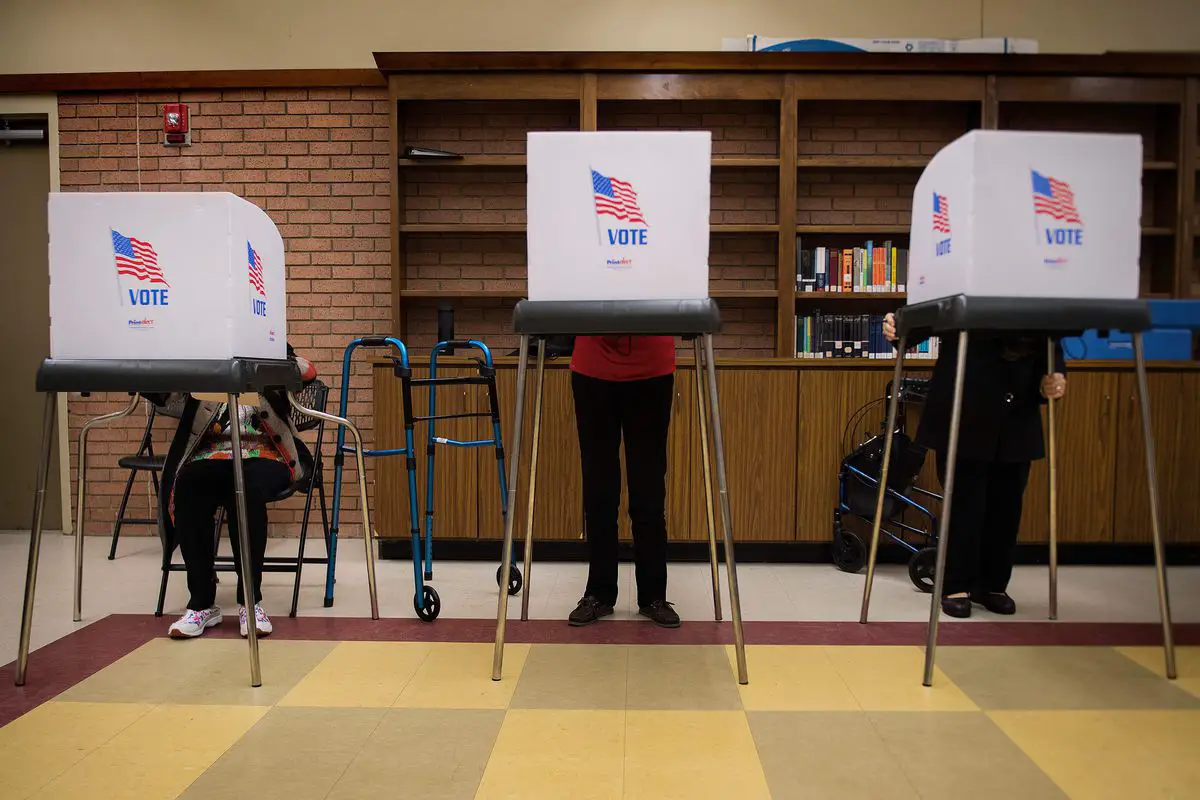Although there are still some recounts in process, the midterm election results have been set in stone — the Democrats flipped the House, while the Republicans retained the Senate. An unprecedented number of votes were cast during this election, with 49 percent of eligible citizens taking part in the process, as compared to the typical 40 percent midterm turnout.
Young people significantly contributed to this increase in the number of votes. Typically, 18-to-29-year-olds have had very low turnouts, especially during previous midterm elections. In 2014, just 19.9 percent of eligible young voters cast their ballots. Results are still pouring in for the final results as to just how large the youth turnout was, but according to The Atlantic, early polling results suggest that about 13 percent of the electorate was composed of voters 18- to 29-years-old compared to 11 percent in 2014.
Despite this increase, a number of young people still chose not to vote for various reasons. I asked five friends, who chose to remain anonymous, why they didn’t vote in the midterms. Here are their responses.
1. “I forgot to preregister/register.”
This is a common issue with young people. As many as 23 percent of 18- and 19-year-olds said they missed the deadlines for registration. The registration process can be confusing, especially because processes are different for each state.
However, 15 states now have same-day registration, meaning that voters can both register and vote on the same day. Same-day registration has been shown to increase voter turnout by a significant amount. Plus, registration deadlines are often early in the election process, meaning that by the time voter drives begin to take effect, citizens can no longer register.
So really, why doesn’t the United States have automatic voter registration?
Countries such as Sweden and France that have this system in place have turnout rates between 70 – 80 percent, while the United States’ turnout rate is 54 percent.
In the mid 1800s, voter registration was implemented to both cut down on corruption and to prevent certain demographics from voting. In 2018, it seems as though states should at least begin to look at automatic registration. At least 12 states have authorized automatic registration, but not all of them have implemented it.
Should politicians work to make voting more accessible to everyone, the public would see a significant increase in not only voter turnout among young people, but also among the general population.
2. “I didn’t receive my mail-in ballot in time.”
Unfortunately, there’s little that anyone can do about this. Most states do allow for provisional ballots, meaning that voters can cast their votes in person and their eligibility will then determine if their vote counts. This is probably the best way to get around not receiving an absentee ballot in time.
Some states, such as California, New York and Utah, among others, also allow eligible voters to cast ballots outside of their precinct, although those votes may be only partially counted. The only state that fully counts any ballot cast in the incorrect precinct is Maine.
3. “I didn’t think my vote would make a difference.”
It’s difficult to convince people that their vote does actually matter. In many states, it seems as though decisions are practically made before the election even occurs. For instance, California has been a liberal hub and turned out many Democratic governors and senators for years now, meaning that many citizens believe that there is no point in voting, whether they are a Democrat or Republican.
Unfortunately, that mindset is how the country ended up with the current elected officials. People complain about President Trump and their elected Congress members and senators, but don’t bother to vote. Even if it seems fruitless, everyone’s vote matters. That’s been proven in multiple districts and states around the country.
In just the past few days, a race in District 45 in California flipped a House seat with the Democratic candidate, Katie Porter, winning over the Republican incumbent, Mimi Walters. That district has previously been primarily Republican, and the final results were decided by just a few thousand votes.
So, how can politicians and social activists convince people that their vote does matter?
The answer will likely come down to better voter education. Citizens, especially young people, often don’t understand the impact of their vote. If young people and others can be convinced that their vote will make a difference, the public is likely to see an increase in the number of votes from 18- to 29-year-olds.
4. “I didn’t feel as though I was informed enough.”
Of all the reasons listed here, this one seems to be the most valid. Voters have a civic duty to be well-educated about the issues they’re voting on — it’s normally considered bad form to simply vote along party lines.
But there are so many issues on ballots nowadays that it can be difficult to learn everything about every proposition and candidate. Many states give fairly detailed explanations of each proposition in the voter information guide, and some candidates also submit statements. However, those explanations/statements can be pretty biased depending on who wrote them. That means potential voters have to take time out of their busy schedules to fully educate themselves on both sides of every issue and on the opposing candidates, which most people don’t have time for.
Plus, there are different conventions for every state, so people in various states receive different information. Voters in California have information packets with detailed explanations of the pros and cons of each proposition and information on candidates (although candidates have to buy space for their statements). Voters in Montana, however, may only receive information on ballot measures and no information on any candidates.
Perhaps all states can work to release more information about the issues on the ballot. And, although this would be much more difficult and would still take up time, states could try to split up measures on the ballot and offer voting multiple times during the year. Unfortunately, that might actually decrease voter turnout because voters would be required to go the polls multiple times during the year, and they might still claim that they are busy. This leads well into the next reason given for not voting.
5. “I was too busy.”
This is the most common reason behind Americans in general not voting during elections. While states try to make them accessible for everyone, polling times are often constricting for people who don’t work regular nine to five jobs or for parents with younger children. Plus, Tuesdays are typically busy for most people.
A Tuesday was chosen as the official Election Day in the 1800s in order to allow “Sabbath-observing farmers to make a trip into town,” according to Time. That’s not much of an issue anymore, but the U.S. has kept the tradition.
Many politicians and activists are now pushing to make Election Day into a national holiday. This would allow voters the time to cast their ballots and not miss out on work or worry about picking their children up from school.
Some people have pointed out that people might just treat Election Day like another normal day off and still not vote, but that doesn’t change the fact that more people would be able to vote if Election Day were made a national holiday. It doesn’t seem as though much harm would come of adding one more national holiday that would promote democracy across the United States.
The above reasons are all fairly valid explanations for not casting a ballot on Election Day, but many of these problems can be cured with just a bit more work from politicians, activists and local, state and national governments. It’s hard to say that putting a little more work in in order to increase voter turnout isn’t worth it, so over the next few years, the American public will hopefully see easier paths to voting implemented.
















